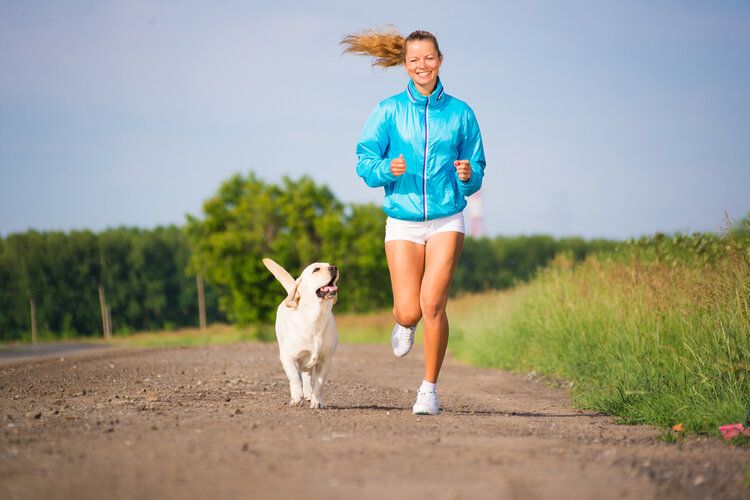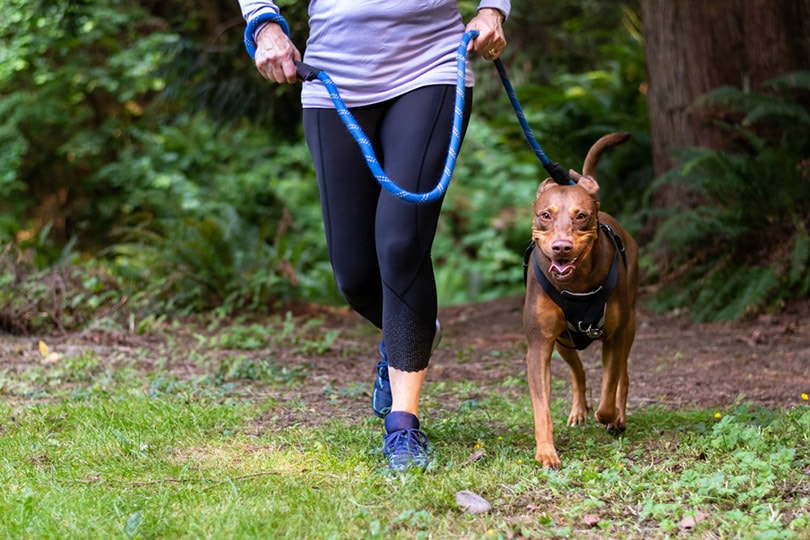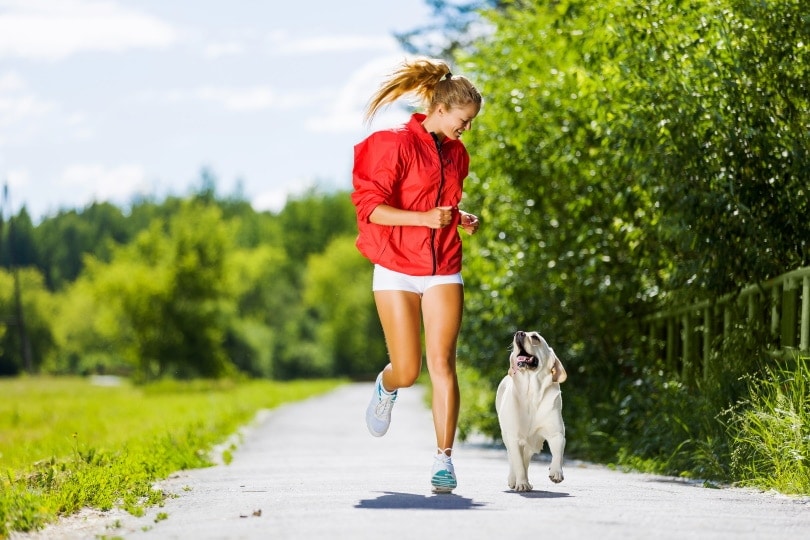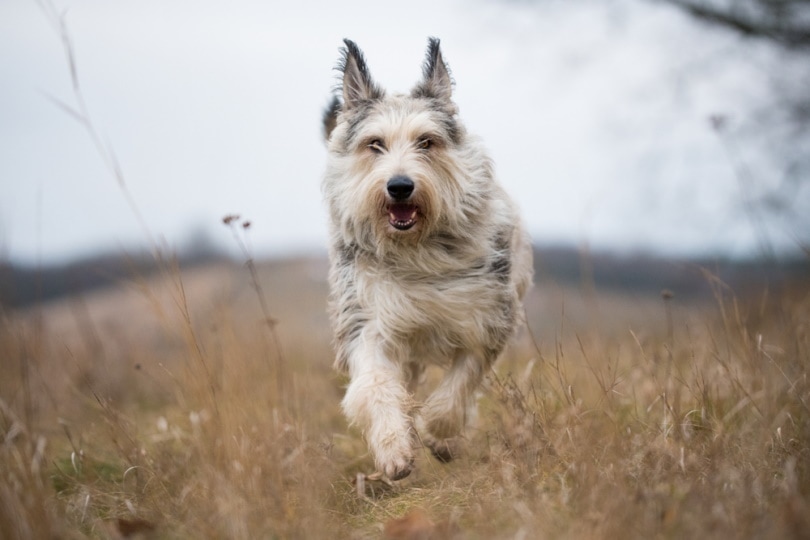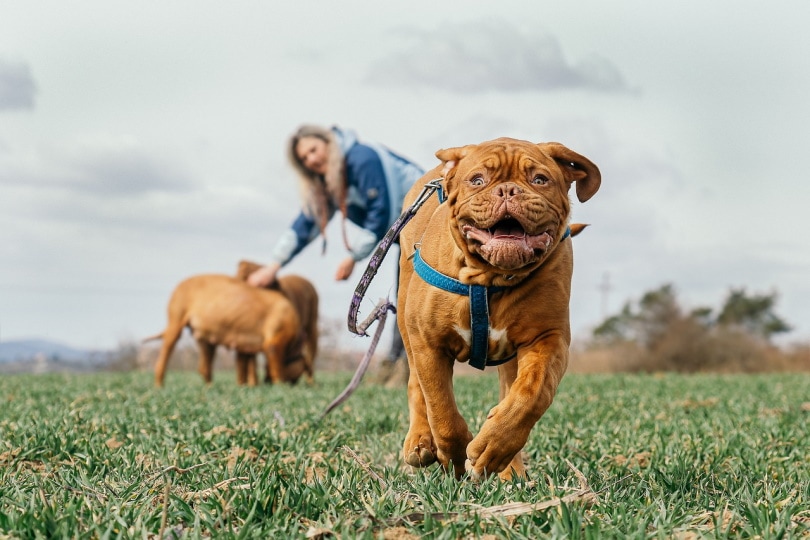As we approach the holiday season and all the delicious food that comes along with it, many of us start thinking seriously about our fitness. If you’re thinking of starting a running routine as your New Year’s resolution, why not let your dog join in on the fun?
Here are 10 benefits of running with your dog, plus some tips to help make the experience enjoyable and successful for both of you.
Top 10 Benefits of Running With Your Dog
1. Provides Motivation
Some people truly love running and are motivated simply by that joy. Many of us, however, can find it hard to push ourselves out the door for a jog—especially if we’re just starting out on the runner’s journey. Running with your dog can provide that extra motivation you need to get moving. Once your dog gets in the habit of running with you, good luck resisting that hopeful face if you’re considering skipping out!
Out-of-shape and overweight dogs are prone to health issues just like humans with the same concerns. Running with your dog can help keep you both fit and even drop some weight if suggested by your vet or doctor. If neither you nor your dog has been getting regular exercise, get the okay from both of your health professionals before you get started. Don’t be tempted to start out running a 5k either. Start slowly to avoid injury to you or your dog, and start getting in shape together. You may have heard the term “runner’s high” to describe the rush of positive feelings many people experience while running. This effect is caused by endorphins, hormones that your brain secretes in response to pain, stress, and during exercise. These hormones act as a natural pain reliever and mood booster. Dogs can also experience this phenomenon. Running with your dog may tire you both out, but it can also leave you feeling happy and satisfied. Running alone, especially in hours with decreased lighting, can be dangerous. Running with a dog can help provide a level of protection or at least some peace of mind for solo joggers. Dogs of certain breeds and sizes can instantly make many muggers think twice before bothering you. At a minimum, the presence of a canine companion makes bothering you more complicated than it might someone running without a dog, possibly lowering your chances of becoming a target. Dogs are also much better at spotting potential dangers than you are, thanks to their sensitive noses, ears, and understanding of human body language. When you’re running with a dog, you must remain extra aware of your surroundings because you have to keep your pup under control no matter what. Kids, other dogs, and distracted drivers can all pose a danger to your pup. You also never know when your dog might spot a squirrel or cat to chase and take off in the opposite direction. This improved focus will help keep both you and your dog safe as you run together. Once you get into the habit of running, it can be easy to overdo it and hurt yourself. Running with your dog can help you avoid this because you’ll have another body to worry about besides yourself. Depending on how good of shape your dog is in, they just may not be able to run as far as you might push yourself to go. This is especially true of a younger or older dog. You don’t want to damage a growing puppy’s joints by overexercising them. An older dog may develop stiff joints that cause pain if they exercise too hard. You’ve probably heard the saying “a tired dog is a good dog.” While this isn’t entirely true, it is a fact that many active dog breeds will develop bad behavioral habits if they don’t get enough exercise. You’ll still need to work on training and socializing to make sure your pup is a “good dog,” but getting in a good run first can tire them out enough to focus on learning. When you’re deciding what dog breed is best for you, take into account how much exercise they’ll need and whether you’re prepared to meet those needs. If you perform the same exercise every day without variation, your body grows accustomed to it and your fitness levels may flatten out. To improve strength and endurance, you need variety in your workouts. Running with a dog can help you naturally vary your pace as you keep their endurance levels in mind too. They may start out strong and fast, then drop off until they get their second wind. To keep your dog entertained, you may also choose different locations for your run that can add variety to your workout. For example, mix in a hilly trail run with flat street training throughout your neighborhood. Running with your dog is a great way to improve the bond between you, especially if you lead a busy life without a lot of free time. Many dogs can develop separation anxiety and destructive habits if they don’t get enough time and attention from their humans. If you’re a runner, training your dog to join you on your jog can provide an easy opportunity for bonding, in addition to the other physical and mental benefits we already discussed. Running with your dog provides a natural opportunity to socialize with other dog-loving humans. If you’ve just moved to a new city, it can be hard to meet people, especially if you work long hours. Dog owners already have a built-in conversation starter—and if you’re also a runner, that makes two icebreaker topics! Whether you’re looking for a romantic or platonic connection, running with your dog may provide opportunities for both. If you’re looking for reasons to run with your dog, we have plenty! As you can see, running with your dog can be beneficial to both of you in a variety of ways. Just keep in mind that not every dog is cut out to be a running companion. Small and toy breeds may have a hard time keeping up with you and may tire quickly. Likewise, flat-faced breeds like Pugs and Bulldogs don’t tend to tolerate any exercise very well, and can develop difficulty breathing. Owners of these breeds may need to find a human friend to join them on their runs and other ways to get their pup some daily exercise. Featured Image Credit: Khakimullin Aleksandr, Shutterstock
2. Keeps You Both Fit
3. Helps You Feel Good
4. Provides Protection
5. Improves Focus
6. Helps You Not to Overdo It
7. Improves Your Dog’s Behavior
8. Helps You Vary Your Workout
9. Provides Bonding Time
10. Improves Your Social Life

In Conclusion
Contents

